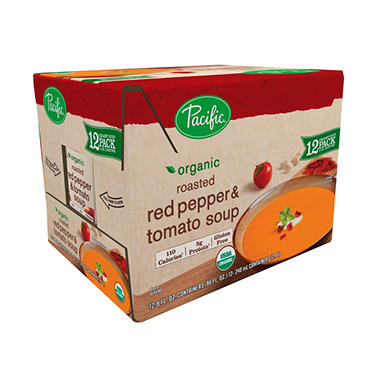
I went to an auction last weekend. I think I've mentioned auctions here before; they're usually a way to buy things at a bargain price and I find them entertaining. This particular auction was for a gun collection that an elderly gentleman had spent 60+ years accumulating, so I went looking for a few items that are absent from my own personal arsenal.
Unfortunately, he was a
collector and not a
shooter, so most of the guns went to other collectors at inflated prices. I don't understand paying $2,000 for a pistol that you're never going to shoot, or getting into a bidding frenzy and paying more than retail for a newer gun. (I ended up getting some reloading supplies and gun cases, though.)
During the auction, I struck up a conversation with a group of bidders sitting next to me and had to fill them in on a few of the details on several of the rimfire firearms, which brought up the ubiquitous .22 rifle. Every prepper website worth its salt will tell you that having a .22 set aside for hunting, pest control, and instructing new shooters is a must. Generally they mean firearm chambered in .22 Long Rifle (22LR), which is the most commonly made rimfire round, and rifles and pistols have been chambered for it for well over a hundred years. What a lot of folks don't know is that there are several other .22 rimfire cartridges, and some of them are compatible with the 22LR while others are not. Here's a brief break down of the ones you're likely to run across.
Common .22 Lengths
.22 Short (22S)
This is the original .22 rimfire cartridge, designed as a pistol cartridge in 1857. It was used in Olympic shooting competitions up until 2005, when strict gun control laws made it almost impossible for many teams around the world to practice. Many companies still produce 22S ammo, but supply and demand place the price at the same level as 22LR which has better performance. 22S can be used in most firearms chambered for 22L or 22LR.
.22 Long (22L)
Not a common round, but one that is still available, the 22L is an in-between cartridge designed to improve the 22S by stretching the case and using the same bullet. It can be used in most firearms chambered for 22LR.
.22 Long Rifle (22LR)
Using the same brass as the 22L but with a longer bullet, the 22LR is the most produced cartridge in the world. A pain to reload, the brass is normally discarded after use. Found everywhere up until 2013, the 22LR is available in a wide range of bullet weights, bullet designs, and bullet velocities, meaning that you can make the most use of the rifle or pistol chambered for it. Manufacturers are only now starting to catch up with demand (and the hoarders have run out of room to store any more cases of it), so it is starting to appear on store shelves and at a more reasonable price.
.22 Magnum (22WMR)
Introduced in 1959, the 22WMR uses a larger diameter case and bullet than the other common .22 rimfires. It is
possible to chamber a 22LR in a 22WMR gun, but this is discouraged in the strongest language possible because the brass won't seal the chamber properly and it could lead to damage to the gun or user. Since 22WMR is a newer round by almost 100 years, there are fewer guns chambered for it, and it costs about twice what 22LR goes for. Its extra case capacity and heavier bullets make it a better hunting round on game larger than rabbits and squirrels at ranges out to about 150 yards.
.22 Shot-shells
Using either a plastic cup or a crimped case to hold a few pellets of #11 or #12 shot, the 22 Shot-shell is designed to kill rats and small birds at close range without punching holes in your dwelling. They are fun to shoot, but expensive, and may not cycle a semi-auto action. Additionally, the crimped-case style doesn't like to eject from slot-type ejection ports because the cartridges remain longer than a spent 22LR case.
Uncommon Lengths
This one is still out there, hard to find and causing confusion when it is.
.22 Remington Special (22RS),
aka .22 Winchester Rim Fire (22WRF)
Only a relatively few rifles were ever chambered for these cartridges, making them attractive to collectors. The .22WR is basically a shortened version of the .22WMR and can be chambered is firearms made for 22WMR. The development of better powders for the .22LR in the 1930's erased any advantage the .22WR had and it is no longer an option on new guns.
CCI and Winchester occasionally make a production run of this ammunition, and then idle the equipment until it is sold out. This leads to a sudden price drop as a new run hits the market, followed by a steady climb as the supply is depleted.
Obsolete and Obscure .22 Lengths
This ammunition is rare and generally only found at specialty shops.
22BB, aka 22CB
This is basically a percussion cap from a black-powder pistol with no powder (the priming compound was enough) and a BB or Conical Ball (CB) pressed into the mouth for a projectile. These were designed for use in very small shooting ranges or galleries at fairs and exhibitions. Shooting galleries used to be a common sight inside cities a hundred years ago, and having a target range in your basement wasn't unheard of either. Cheap, quiet, and effective at honing or teaching the basics of marksmanship, the 22CB has been replaced by several primer-only 22LR cartridges in recent years.
.22 Extra Long
An attempt at making the .22 Long more effective in rifles, these were supplanted by the 22LR, which borrowed the bullet from the .22 Extra Long and became a much better cartridge.
.22 Stinger
This round has the same overall length as the 22LR, but with a slightly longer case and shorter bullet. It is notable mainly for being the base cartridge for the 17 Mach 2, a rare chambering in itself.
Determining Firearm Chambering
If you're looking to buy a .22 rifle, look at the side of the barrel. Normally there will be information stamped on the barrel somewhere near the chamber indicating what cartridge the rifle is designed to fire. Semi-autos like the common Ruger 10-22 will only shoot 22LR, and sometimes they get picky about working with standard velocity ammunition. Bolt action, lever action, pump action, and single shot rifles will often be marked “22 S, L, or LR” and will feed, fire, and eject all three types. This leads to more options if you're scrounging for ammo, or if you want options like subsonic or high velocity rounds from the same rifle. Newer rifles may not have the proper internal pieces to manipulate the 22S and 22L cartridges, so keep an eye out for good used guns.
Pistols are similar to rifles in that the semi-autos get picky about wanting a specific load (usually high velocity) and will only work with 22LR. Revolvers and single shots will eat just about anything, but the point of impact will vary as the velocity and bullet weight change.
Kentucky windage is a skill that takes some practice but comes in handy.
Resources
If you're looking for any ammunition, check our sponsor
Lucky Gunner. If they don't have it, I often use
www.ammoseek.com to check prices and availability for my ammunition purchases.
For odd and obsolete ammo,
Old West Scrounger has been a resource for many years.
For detailed information on cartridge dimensions,
SAAMI is the only source to use. The Sporting Arms and Ammunition Manufactures Institute sets the standards for all ammunition produced in the USA. Most reloading manuals will have basic information on center-fire cartridges, and they get their information from SAAMI.




























